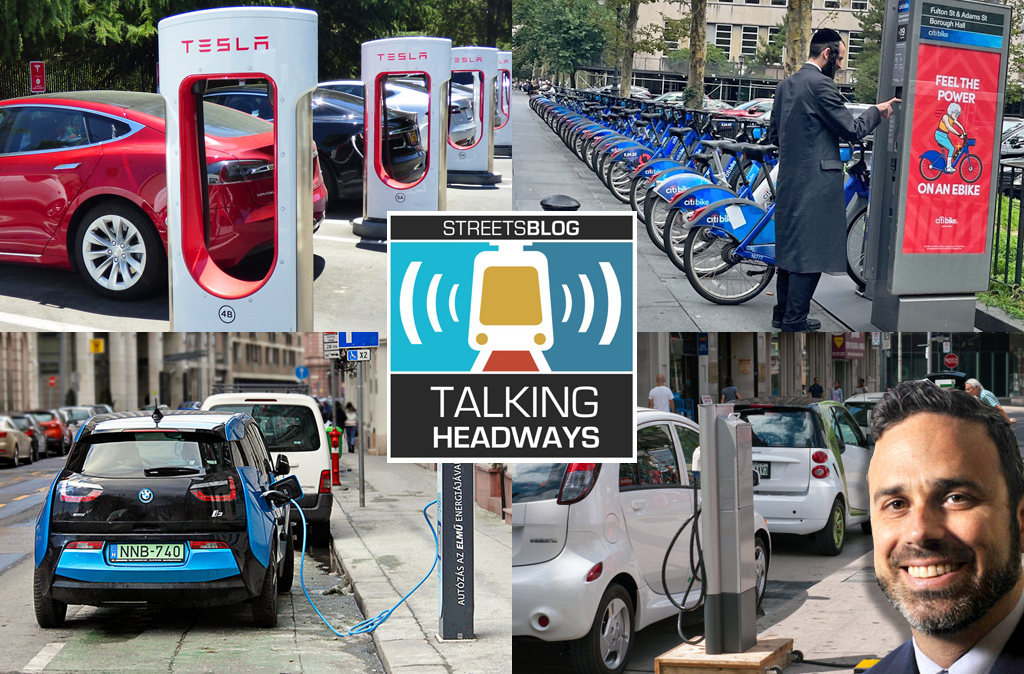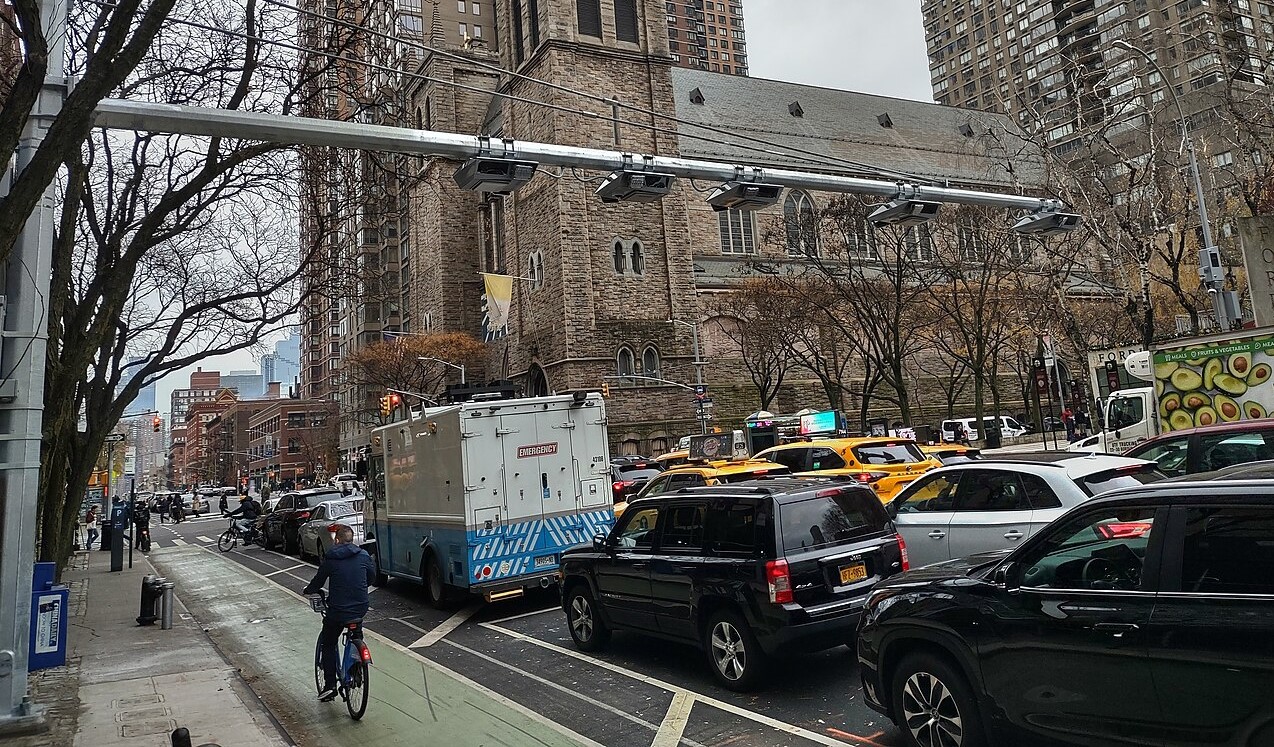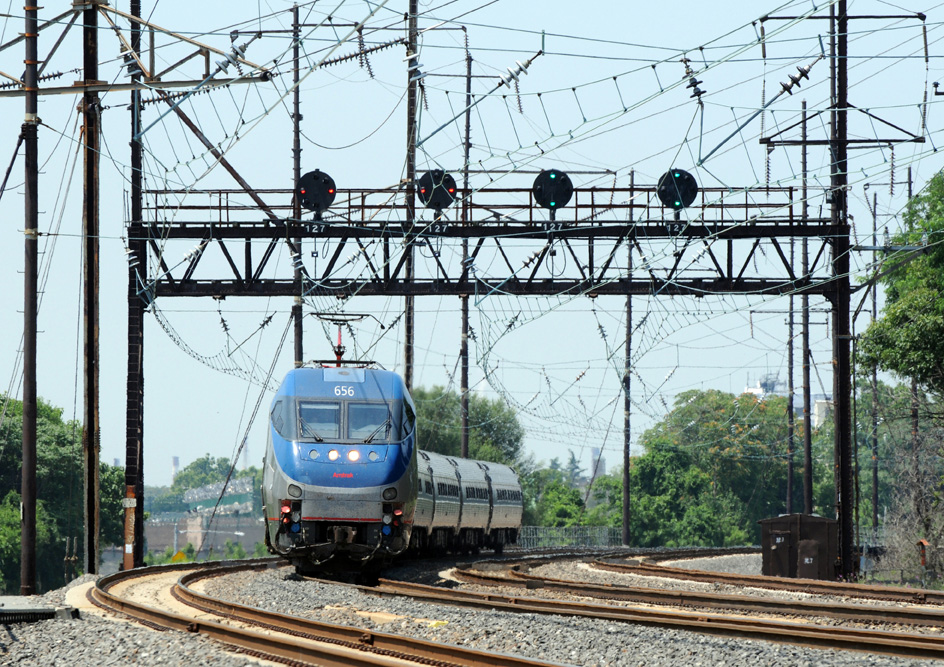This week we’re joined by Gabe Klein, executive director of President Biden's Joint Office of Energy and Transportation (and a former Streetsblog board member). We chat about the office’s recent white paper on best practices and solutions for electric vehicle charging.
For those of you who prefer to read than listen, there's a full transcript here, but if you want an excerpt, check out the conversation below the podcast player:
Jeff Wood: Let’s talk about charging. It’s different from fueling in that 80 percent of it happens at home, but it also means that there are many folks that can be left out of that. The white paper you released in February, Community Charging: Emerging Multifamily, Curbside, and Multimodal Practices, focuses specifically on that 31 percent of multifamily households. Why did you choose to highlight that aspect specifically?
Gabe Klein: One reason is because that one-third of the country is just as important as everybody else. It’s also the trend. You know, housing is less affordable. There’s fewer single-occupancy houses being built. And so multi-unit in many ways is the future. There’s also a tremendous amount of multi-unit being built right now to meet the demand, right? And so Mesa, Arizona Mayor John Giles, who’s in our EV working group, was saying, "Look we’re building all of this housing in Mesa and we still haven’t changed our zoning to require more than four EV chargers in every building, no matter how many units. We have to change that."
And I thought that was a great point: what are the things that we can change and shape now in urban areas with multi-unit that will have a big impact — and by the way, save money and give people options? Well that’s one right there. Governments can streamline permitting for chargers. They can allow more peer-to-peer charging.
So what we’re trying to do is highlight best practices and then also provide funding opportunities in the Joint Office. We’re really trying to see innovation, right? And we’re trying to maybe take a little bit more risk with smaller dollars so that cities and companies can learn and then when they’re going to scale with tens of millions, hundreds of millions of dollars, they know whether something works or not, right?
And they’ve embedded workforce development in their programs and equity and they’ve made sure that they’re looking at it from a multimodal standpoint, right? And I think that all of these things are absolutely key to our success.
Jeff Wood: What are some of the ways it can be daunting to get charging infrastructure for people that don’t live in homes with garages — because it feels like a lot of the report was focused on some of the ways that it’s tough. You mentioned codes, I mean the International Code Council just rejected making the building code easier to put electrification into new housing and things like that. So what are some of the barriers?
Gabe Klein: Well, you just mentioned one, but I was just talking to a friend who moved into an old building and there are questions about whether there’s adequate power. There was, but he had to go through the condo board, which hadn't been done before. So some of this is just newness, right? And nobody’s done it in your building or in your area. And so there’s a whole learning curve. The other is that there’s hundreds and hundreds of utilities around the country. So there’s not a uniform way that utilities deal with this. And so a lot of what we’re trying to do is bridge a lot of these gaps and provide these benchmarks best practices so that, say, D.C. can learn from Delmarva in Maryland because they’re doing something exceptional that will change people’s lives for the better and make it easier.
You know, we’re testing batteries co-located with chargers so that maybe you don’t need to run new power. You can use the existing power and use a battery to like top it off. So there’s a lot of experimentation happening and we’re actually soon going to be heading overseas to learn from people who may be a little bit ahead of us. And I think there’s a huge opportunity there. ... We’re seeing like from the New York experience, they can work really well, the uptake can be really high, and people that don’t have single family homes or can’t get a charger into their multi-unit building quickly, they generally can use the curb. And then once you’re lighting up the curb for a charger, what else can you do at the same time?
Jeff Wood: I’m curious about the curb, too, because there’s always going to be this fight for street space between you know, bike lanes, e-bike charging, shared bikes as you put in in both D.C. and Chicago. There’s a lot of folks that are frustrated that were already ceding that valuable public space to cars for curbside chargers and things like that. So are there ways we can prepare for the desired future of maybe not having so much space dedicated to cars, especially in these areas that are already dense and already focused on sustainable transportation. Whether that’s active transportation like walking, biking or transit or new mobility scooters or whatever it may be.
Gabe Klein: I’m a big believer that some people have like knee-jerk reactions and they say, "Oh if you have this, you can’t have this." Then people get their back up and they go back to "I’m a driver" versus "I’m a cyclist" versus "I’m a pedestrian" versus "I’m a transit user." I’m a big believer in creating win-win-wins. I remember when we were told in D.C. that taxi stands had to go away because they were causing conflicts with the buses on the major thoroughfares. And I came up with a radical crazy idea of moving them off the main corridor to the side street. Worked fine.
We had a double-parking problem where all these UPS trucks were double-parked all the time. Well, of course, you want to blame them. But we talked to them and they said, "Well the problem is your loading zones are too small. We’re driving trucks. What we really need is to have two trucks in the loading zone." So we had to like double to quadruple the size of each loading zone. And then that problem pretty much evaporated. So we need better communication to figure out what the needs are, and then we need to figure out how we do all of it or as much of it as possible with some level of prioritization. And within the city that’s up to the folks in the city, right? It’s not to us at the federal level now. I’m thinking like as a DOT chief.
And my belief is you can have bike lanes, you can have curbside charging, you can also light up bike share, streeteries, etc. And in my former position in New York at Cityfi, I figured out that there’s a lot of opportunity. Like, once you’re running power to the curb, you can just stub out for everything that you’re doing and the feds are going to pick up 80 percent of the cost and to stub out for you know, 10 Level II chargers or bike share, or the streetery, whatever you’re going to need in the future.






